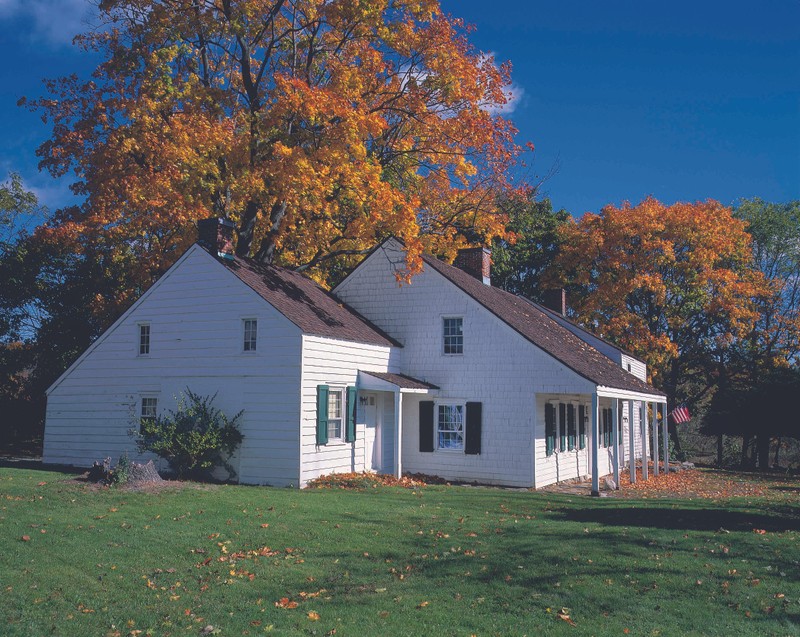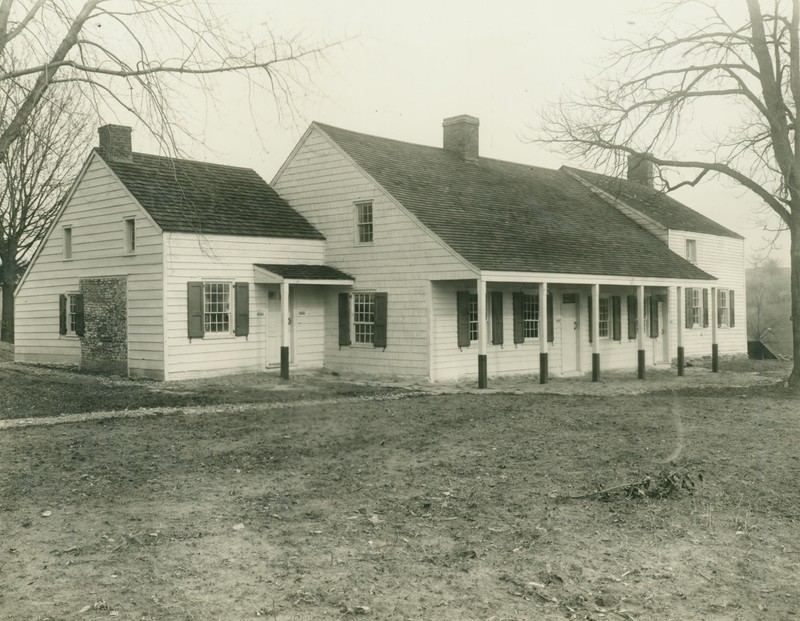Hammond House
Introduction
Text-to-speech Audio
Images
Hammond House.

Hammond House in the early 20th century.

Backstory and Context
Text-to-speech Audio
A native of Bermuda, William Hammond arrived in New York in the early 1700s. By 1719 he was leasing a tenant farm on Philipsburg Manor, and about that year he constructed a home on the parcel that he was renting. Because William owned the building but not the land on which it was located, he constructed the house without a basement so that it could be relocated if his lease was terminated. William served as an elder at the Old Dutch Church in nearby Sleepy Hollow, and was also a captain in the militia. After William died in 1762, his fourth son, James, inherited the tenant farm. James served as an officer in the Westchester County Militia during the Revolutionary War, and was appointed a lieutenant colonel in 1775 and a colonel in 1776. He was captured by the British in May 1780 and was held as a prisoner until November 1781.
As Frederick Philipse III sided with Great Britain during the Revolutionary War, the State of New York confiscated Philipsburg Manor during the conflict. Disposition of the manor was the responsibility of the Commissioners of Forfeiture, who sold off the tenant farms from 1784 to 1786. In 1785 James Hammond purchased the farm that he had been leasing from the Philipses. He lived in the home until his death in 1810, and the dwelling remained in his family for at least three more generations.
The central portion of the Hammond House, which is one-and-a-half stories with a broad front porch, is the original section of the structure. In 1835 a small cottage that was standing on another portion of the property was moved and adjoined to the west end of the original house. This addition served as the house's kitchen wing. In 1860 a two-story addition was built on the east side of the original section.
The land on which the Hammond House stands was acquired by New York City in 1923. Two years later, the city allowed the Westchester County Historical Society to acquire and restore the house. WCHS operated Hammond House as a museum from 1926 to 1989, but sold the building after it was unable to acquire the land on which it stood. Hammond House, which is now privately owned, was added to the National Register of Historic Places in 1980.
Sources
Melvin, Tessa. "Hammond House Seeks Buyer." The New York Times (New York, N.Y.) April 16th 1989.
O'Brien, Austin. National Register of Historic Places Nomination Form: Hammond House. February 1980.
Williams, Gray. Picturing Our Past: National Register Sites in Westchester County. Elmsford, N.Y.. Westchester County Historical Society, 2003.
Westchester County Historical Society. Photo by Gray Williams.
Westchester County Historical Society.
